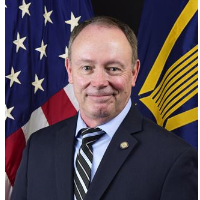Director of the Defense Threat Reduction Agency: Who Is Vayl Oxford?
 Vayl Oxford
Vayl Oxford
Vayl Stanley Oxford, who has worked for decades on issues surrounding weapons of mass destruction (WMD), was appointed in May 2017 to lead the Defense Threat Reduction Agency (DTRA). The agency, created in 1998 as part of the Defense Department, has the goal of reducing the threat of weapons of mass destruction to the United States by either eliminating foreign stockpiles or mitigating their risk to the U.S. and its allies.
Oxford’s father, also named Vayl, was an Air Force pilot. He was stationed for a time in Nashville, where the younger Vayl attended Glencliff High School, graduating in 1970. He went on to the U.S. Military Academy at West Point, but joined the Air Force after his 1974 graduation with a B.S. in engineering. Oxford earned an M.S. in aeronautical engineering from the Air Force Institute of Technology the following year.
Oxford’s Air Force assignments focused mostly on aircraft and weapons development, except for serving as assistant professor of aeronautics at the U.S. Air Force Academy from 1982 to 1986. He left the service in 1992 and joined the Defense Nuclear Agency, a predecessor of DTRA. Oxford served there and at Defense Special Weapons Agency, then at the renamed DTRA. He studied blast effects of nuclear weapons and during the Bill Clinton Administration helped evaluate weapons aimed at taking out an adversary’s WMD production sites.
In 2002, Oxford moved over to the National Security Council in the George W. Bush administration, where he was director of counterproliferation. There, he worked on policies aimed at countering Iraqi WMDs, which were eventually proved to be nonexistent.
Oxford left for the Department of Homeland Security in 2003, eventually as director of the Domestic Nuclear Detection Office (DNDO), which attempts to halt nuclear weapons headed into the United States. Oxford championed advanced spectroscopic portals, which scan steel shipping containers for nuclear materials. The $2 billion project was not as successful as expected and DNDO was roughed up by the Senate Appropriations Committee, which released a report in 2005 calling the agency guilty “of action being taken before thoughtful planning despite the seriousness of problems being addressed. Hasty solutions are fostering an apparent false sense of security.” Another more advanced system, CAARS (Cargo Advanced Automated Radiography System), was abandoned.
Beginning in December 2004, Oxford also served as acting director of the Homeland Security Advanced Research Projects Agency, specializing in funding non-governmental research in sensor technologies for biological, nuclear, and chemical warfare agents. In February 2007, President Bush added to Oxford’s responsibilities the position of director of the Office of Domestic Nuclear Detection, which was created in April 2005 by presidential directive without consultation with Congress.
Oxford remained at DHS until 2009, when he left for the private sector. He worked for a few months as director of WMD countermeasures at Northrup Grumman before becoming a senior policy adviser for The Tauri Group.
In 2012, Oxford returned to government service as national security executive policy adviser at the Department of Energy’s Pacific Northwest National Laboratory. He was in that post until being appointed to lead DTRA.
-Steve Straehley
To Learn More:
The Unthinkable (by Steve Coll, New Yorker)
Rushed, Costly DHS Port Venture Failed to Live Up to Hype (by Paul Voosen, E&E News)
- Top Stories
- Unusual News
- Where is the Money Going?
- Controversies
- U.S. and the World
- Appointments and Resignations
- Latest News
- Trump to Stop Deportations If…
- Trump Denounces World Series
- What If China Invaded the United States?
- Donald Trump Has a Mental Health Problem and It Has a Name
- Trump Goes on Renaming Frenzy






Comments